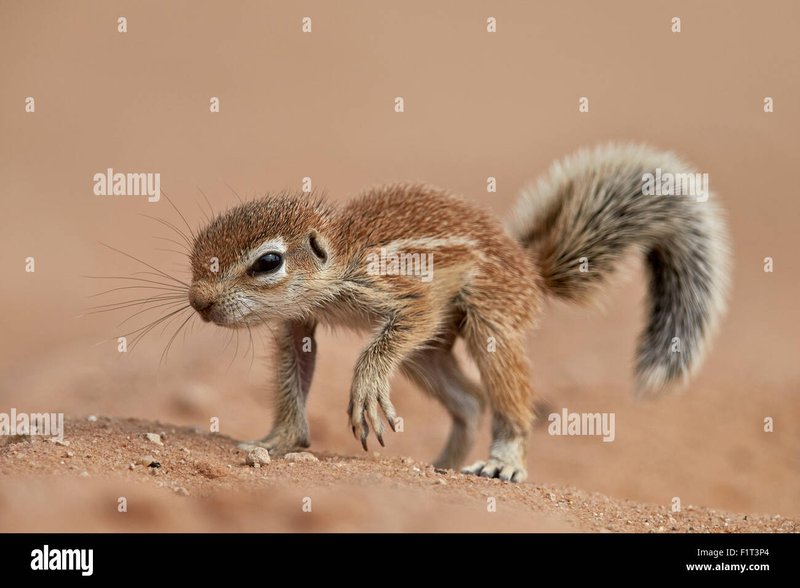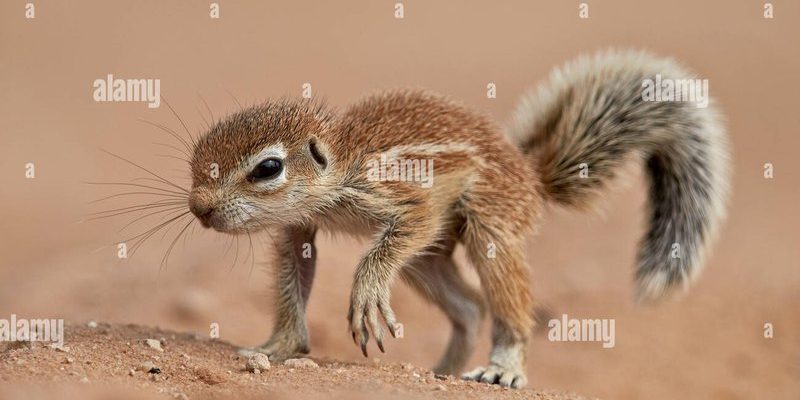
Let’s dive into what makes these little creatures so fascinating. The **xeruss**, or the **African ground squirrel**, is not just another cute face in the animal kingdom. They have developed unique traits and behaviors that help them find food, maintain their bodies, and stay safe from predators. Picture them darting in and out of their burrows, expertly dodging threats and finding resources. Understanding how they do this is not only interesting but also gives us insight into resilience in nature.
Unique Adaptations for Survival
Xerusses are equipped with a variety of adaptations that help them tackle the challenges of their environment. Their bodies are built for life on the ground, with short, powerful legs that enable quick movements. This speed is crucial when they need to escape the clutches of predators, which can include birds of prey and larger mammals.
Moreover, xerusses have thick fur that helps insulate them against extreme temperatures. When the sun blazes down, this fur reflects heat, keeping them cooler than one might expect in such a hostile environment. At night, it provides warmth against the chill, allowing them to carry on with their activities. Honestly, you might say that their bodies are like nature’s own version of a cozy sweater, designed precisely for the climate they inhabit.
Xerusses also have large, expressive eyes, giving them excellent vision to spot both food and danger. They can see wide angles, making it easier to survey their surroundings. This trait is essential, especially when they forage for seeds, nuts, and insects. Let me explain: while they may not have the luxury of a supermarket, their keen eyesight helps them locate food sources that are often hidden beneath the surface.
Finding Food in Harsh Conditions
When it comes to food, xerusses are resourceful. They are primarily **herbivores**, which means they focus on plants. But how do they find enough to eat in such a dry environment? Well, they have a couple of cool tricks up their sleeves.
First off, they are excellent foragers. Xerusses use their keen sense of smell to discover underground roots and tubers. These food sources provide not just nutrition but also moisture—something that’s hard to come by in the desert. Imagine turning over rocks and digging in the sandy soil to uncover a hidden treasure. That’s what they do every day!
Additionally, xerusses are known to cache food. What does that mean? They stash away excess food in various burrows, creating a little grocery store for themselves. This behavior is essential, especially during dry spells when food is scarce. You might be wondering how they remember where they’ve hidden everything. It’s as if they have an internal GPS, allowing them to recall spots even after weeks have passed.
Burrowing for Shelter and Safety
Another key to the survival of xerusses is their incredible burrowing ability. Their burrows serve as homes and refuges from the harsh climate and potential threats. Constructing these underground networks, they dig deep into the ground, creating a cool environment that protects them from the heat above.
These burrows can be quite elaborate, with multiple entrances and chambers. This setup not only helps keep them cool but also gives them escape routes if they’re ever chased by a predator. It’s like having an entire underground city, complete with safe hideouts. When danger looms, they can retreat to their homes in a flash, ensuring they stay out of harm’s way.
Let’s not forget about social behavior, either. Often, xerusses live in colonies that can include several individuals. Living in groups provides safety in numbers. They can alert each other to danger with specific alarm calls, sounding like a tiny siren. It’s a community effort, ensuring everyone stays safe while also socializing and raising young together.
Water Conservation Techniques
In a place where water is a precious resource, xerusses exhibit fascinating techniques to conserve moisture. Surprisingly, they require less water than you might think. Most of their hydration comes from the food they eat, especially the juicy roots and plants they find.
When they do need to drink, xerusses have adapted to take advantage of any available water source, including dew that forms overnight. Think of them as little survivalists who know how to make the best of what they have. They can also go for long periods without drinking water, which is essential in their arid habitat.
Their kidneys are specialized to minimize water loss, which helps them retain hydration even when food is low. This efficient system is akin to a well-designed water bottle that minimizes waste—perfect for life in the desert.
Behavioral Strategies for Survival
Survival in harsh environments isn’t just about physical adaptations; it also involves smart behaviors. Xerusses are known for their clever strategies to cope with the challenges they face daily.
One notable behavior is their vigilance. When foraging, they take turns watching for danger while others eat. This teamwork boosts their chances of survival. Imagine a group of friends taking turns to keep an eye out while enjoying a picnic—this is solely about safety in numbers.
Moreover, they have a unique way of communicating through body language and vocalizations. If something seems off, a xeruss will send out alarm calls, warning others in the colony of potential threats. These calls might sound like chirps or barks and can vary based on the type of predator they’re warning against. It’s a fascinating reminder of how communication is critical for survival, even in the animal kingdom.
Additionally, xerusses are known to engage in sunbathing. Yes, you read that right! Lying out in the sun helps them warm up and conserve energy, making the most of their surroundings. It’s like charging your phone in the sunlight—an efficient way to gather energy for the day ahead.
The Role of Xeruss in Their Ecosystem
While xerusses are often seen struggling for survival, they also play an important role in their ecosystem. As they dig, they aerate the soil, promoting better root growth for plants. This process can help enhance the productivity of the ground, creating a healthier environment for various flora and fauna.
Additionally, their foraging habits contribute to seed dispersal. When they eat seeds and nuts, they often leave some behind, leading to new plant growth. It’s a simple yet effective way of maintaining the balance in their habitat.
Let’s not overlook the food web, either. Xerusses are prey for numerous predators. Their presence supports the survival of those higher up in the food chain, like hawks and snakes. You might say they play a crucial part in maintaining the entire ecosystem’s health, reminding us how each creature, no matter how small, has a role to fulfill.
The xeruss is a true testament to resilience in the face of adversity. Through a combination of unique adaptations, smart behaviors, and their role in the ecosystem, these little creatures demonstrate the power of survival in the harshest environments. They remind us that even in the toughest conditions, life finds a way to thrive.
Next time you think about the challenges of living in a harsh climate, consider the xeruss. Their strategies for survival are not just fascinating—they’re also a powerful reminder of nature’s creativity and adaptability. Whether you’re a nature lover or just curious about survival tactics in the wild, there’s much to admire in the life of these remarkable rodents.

